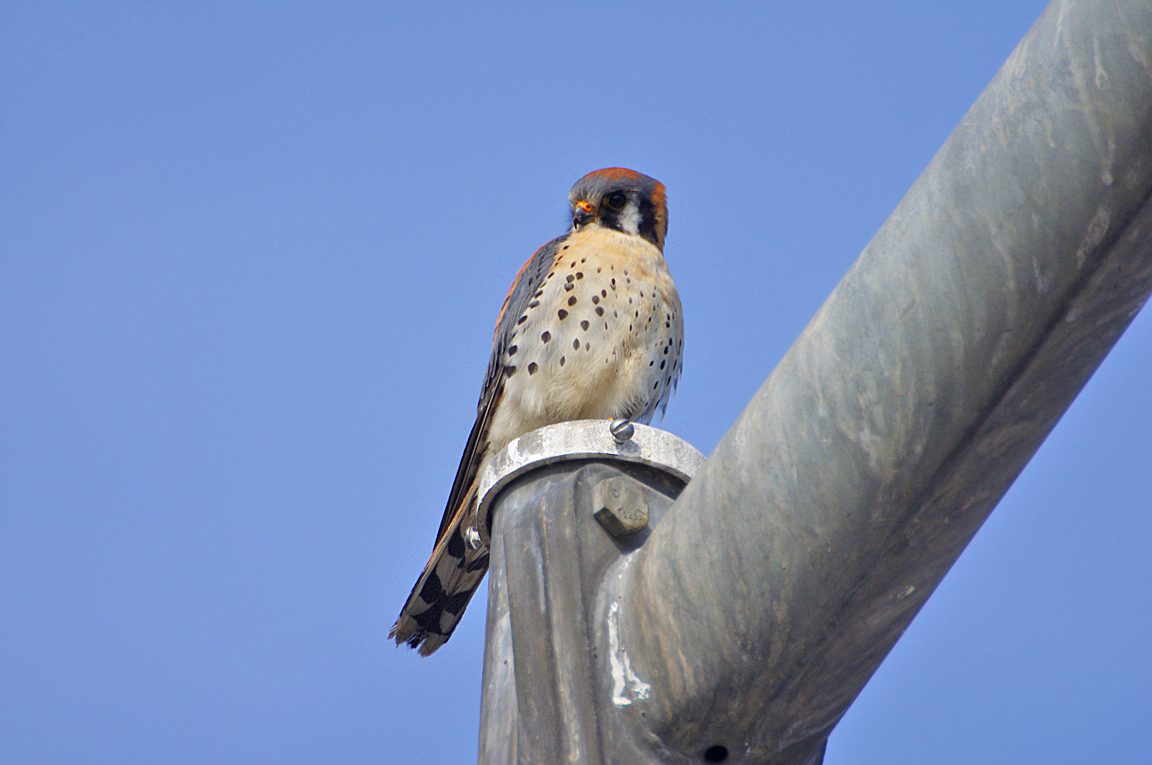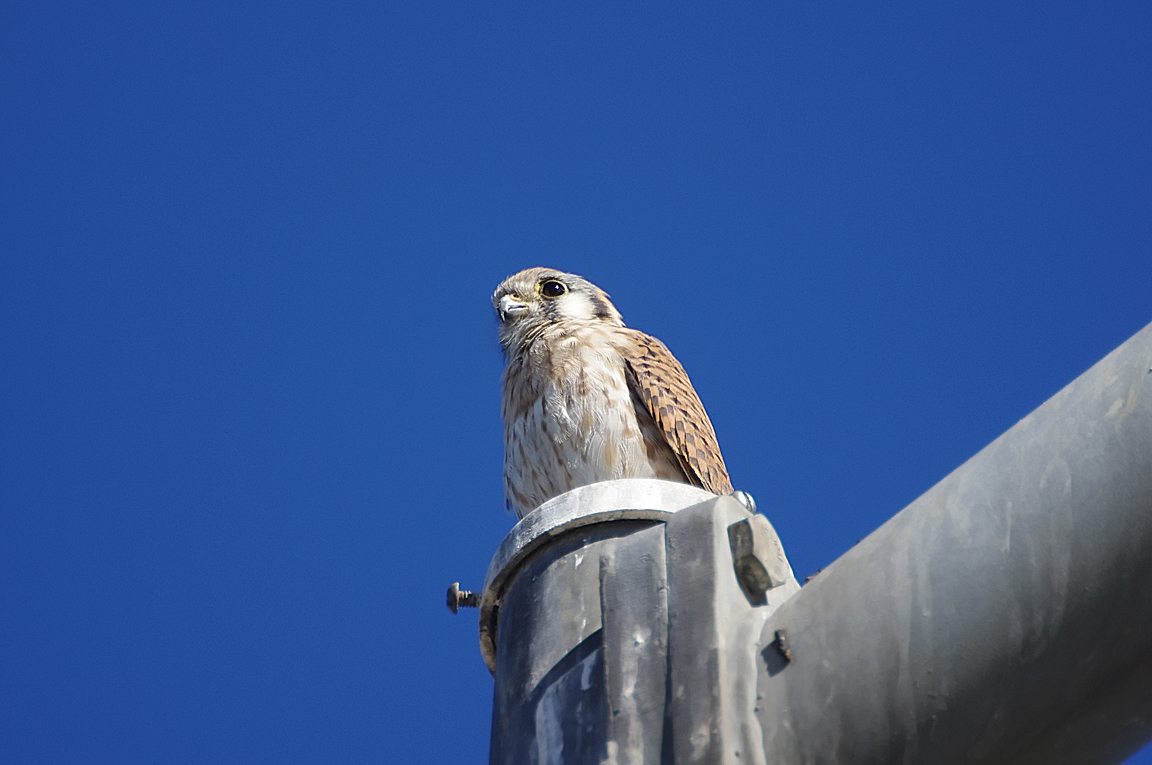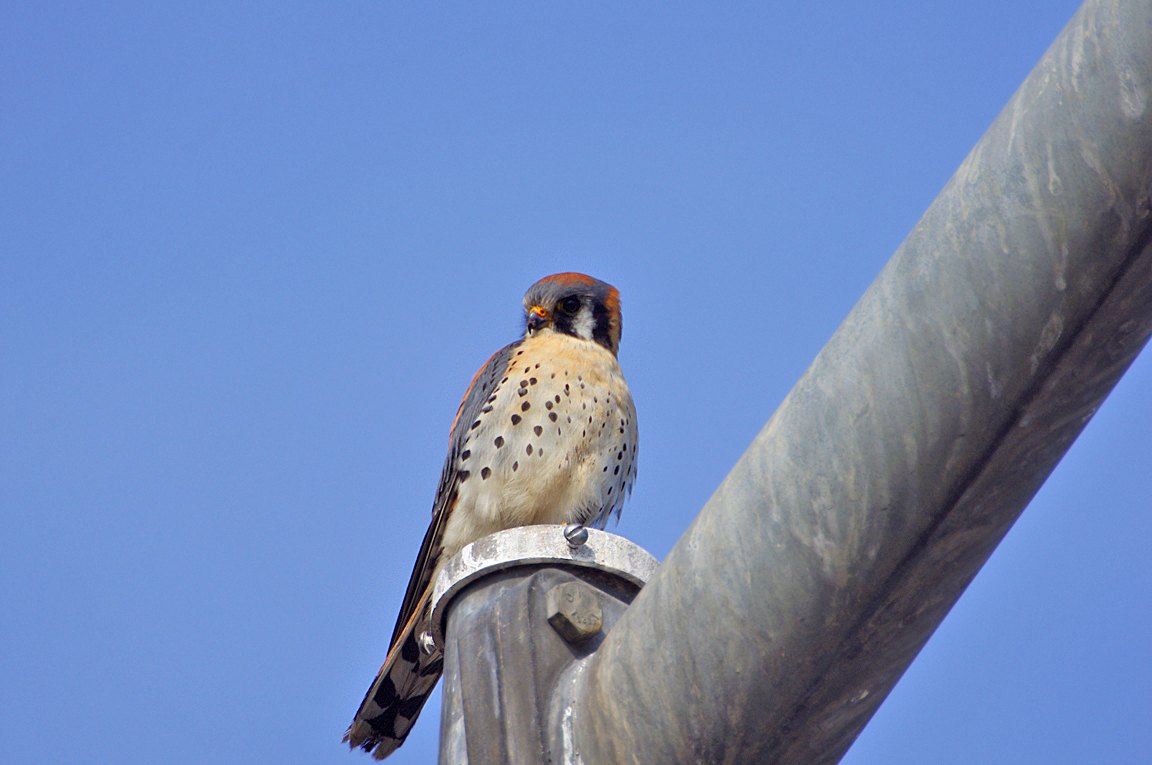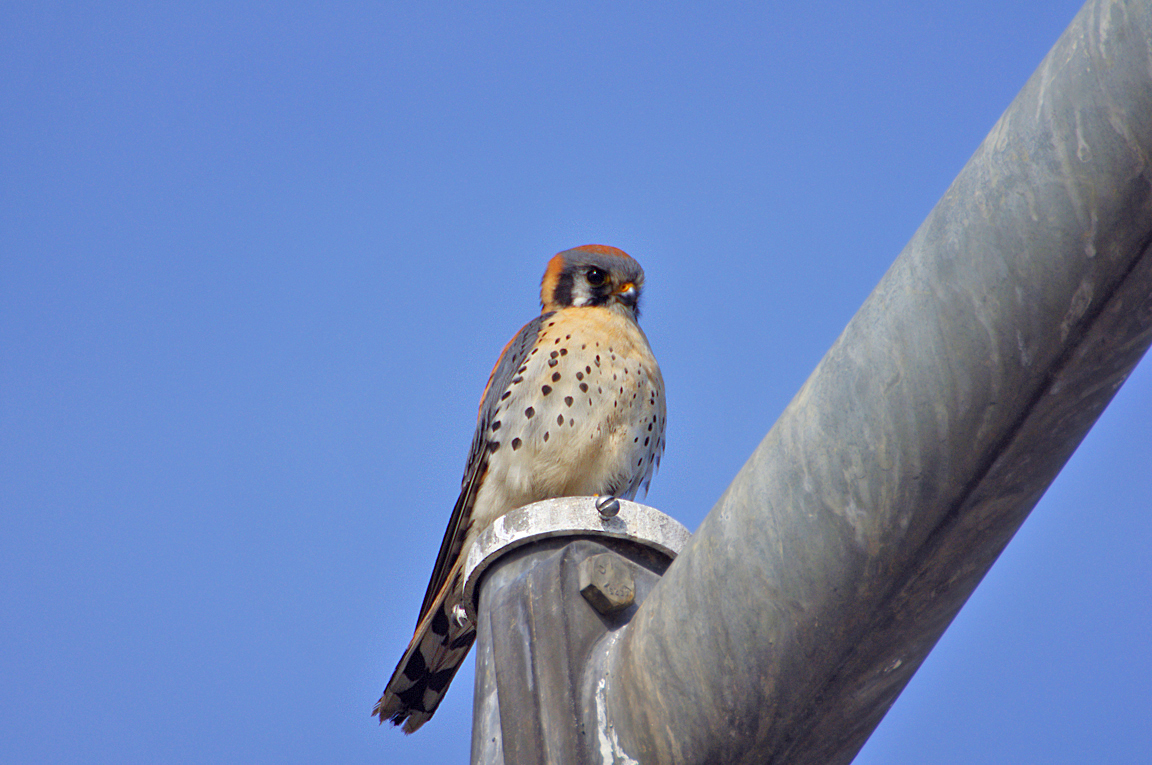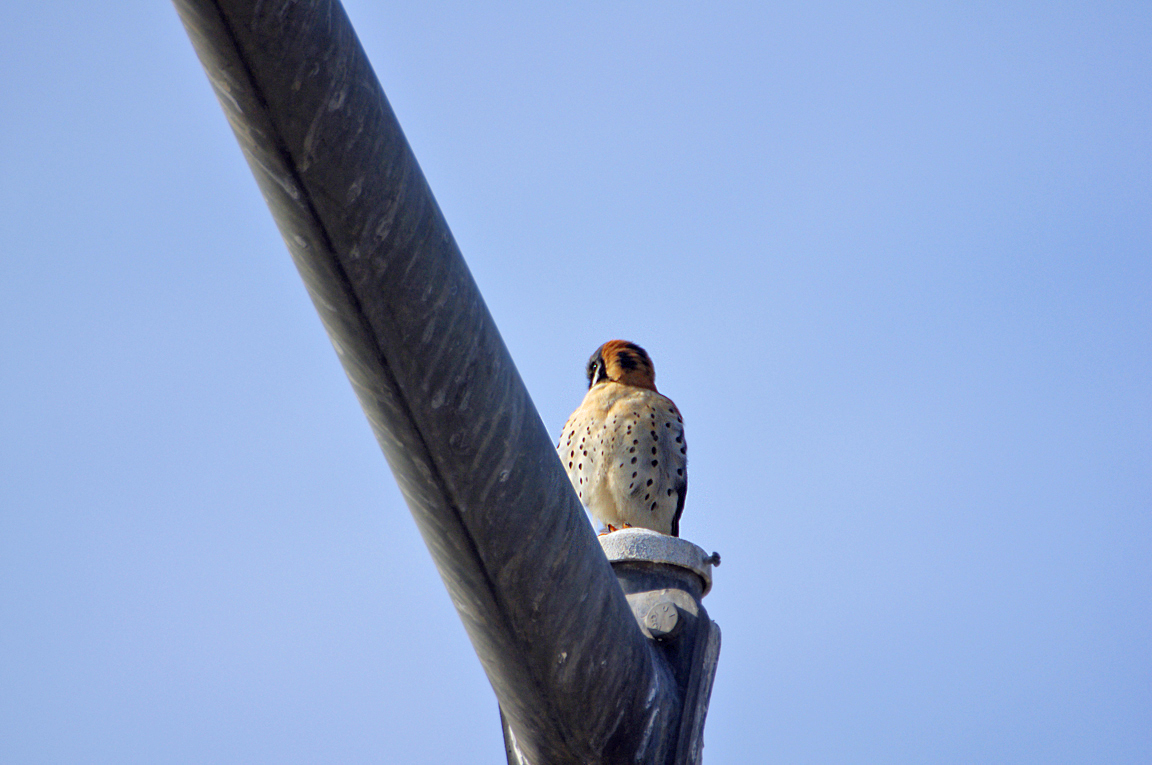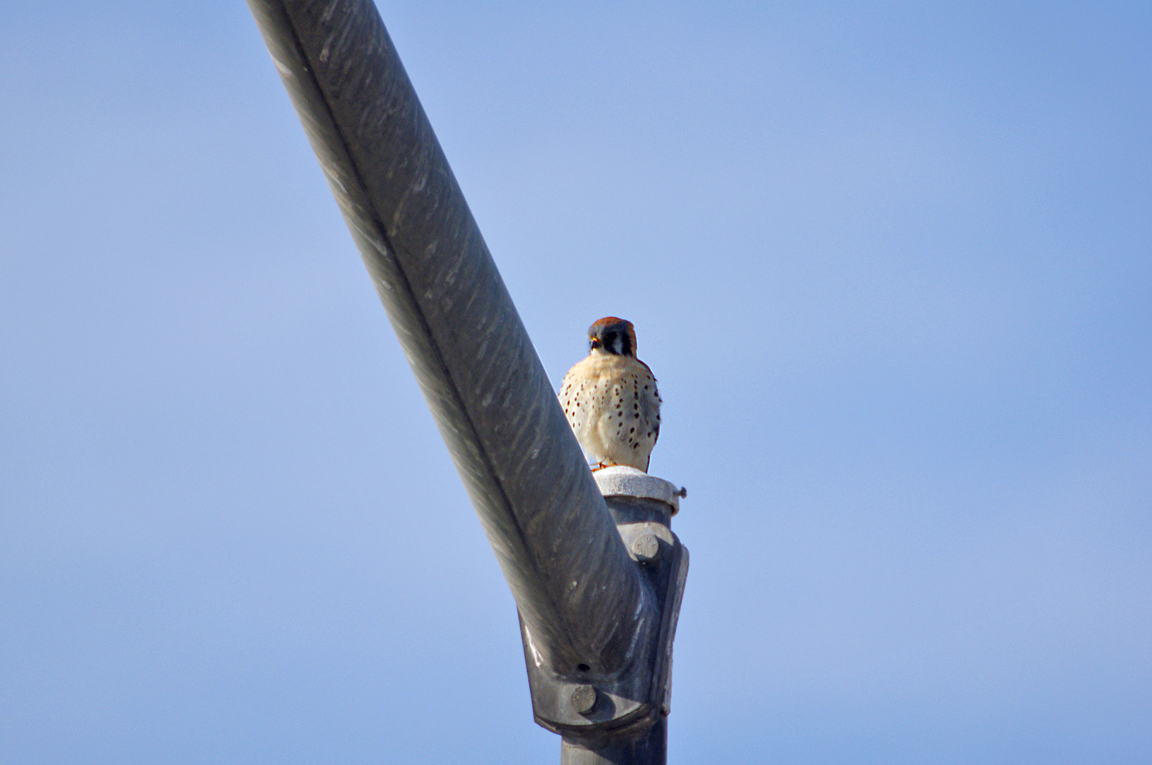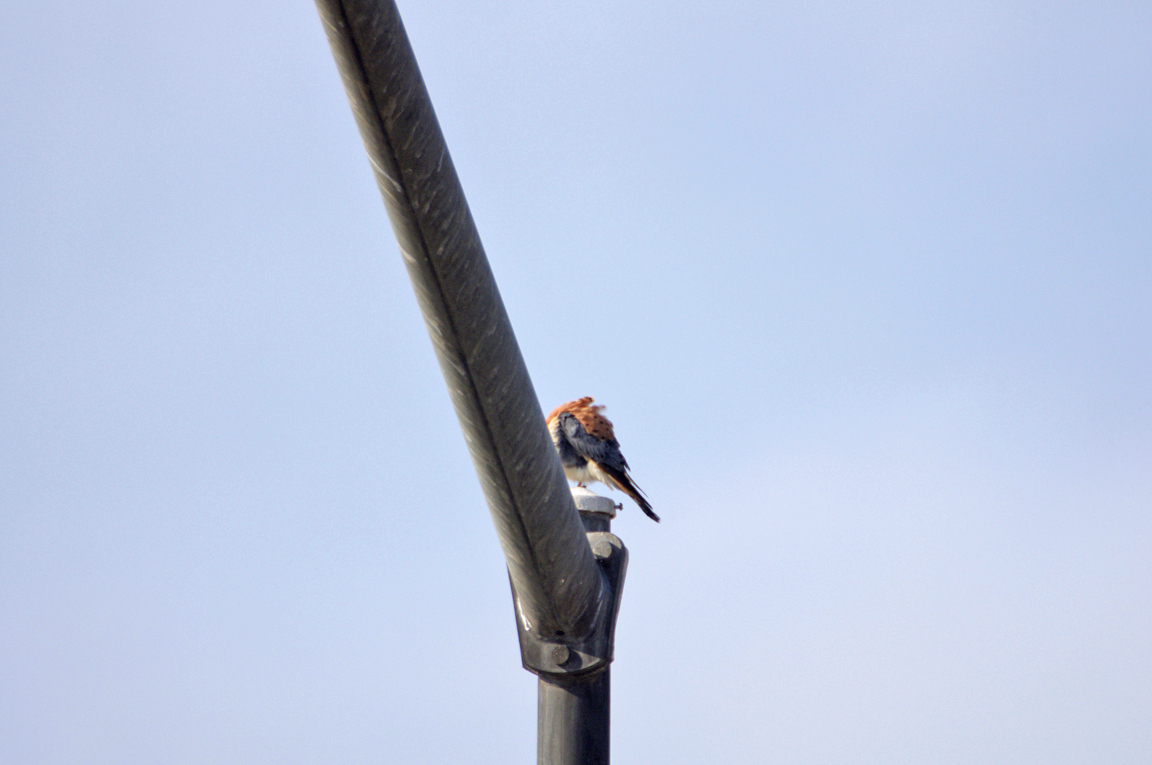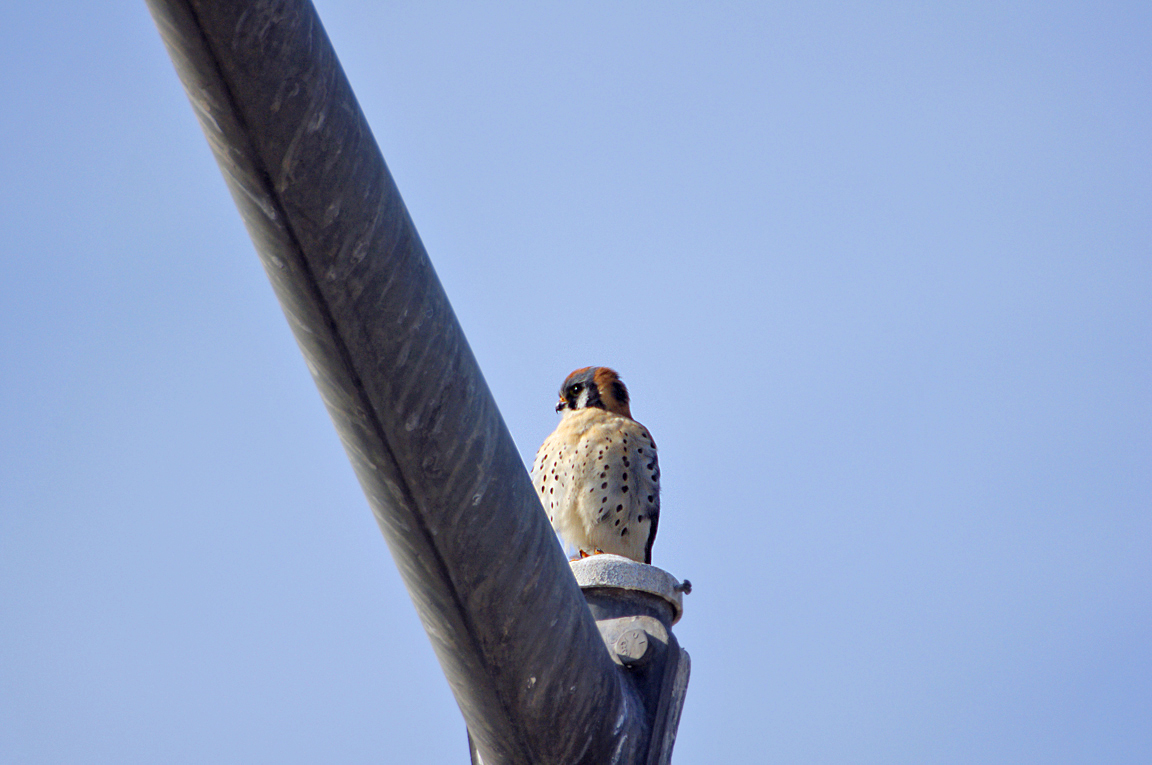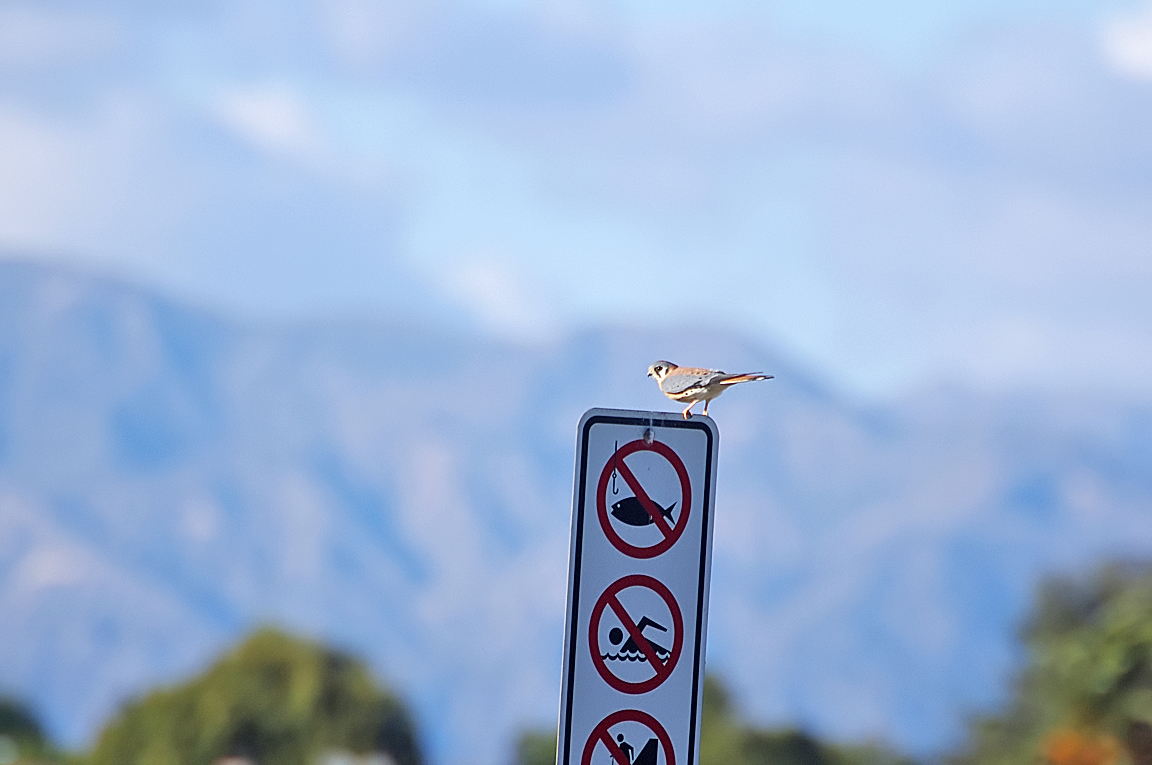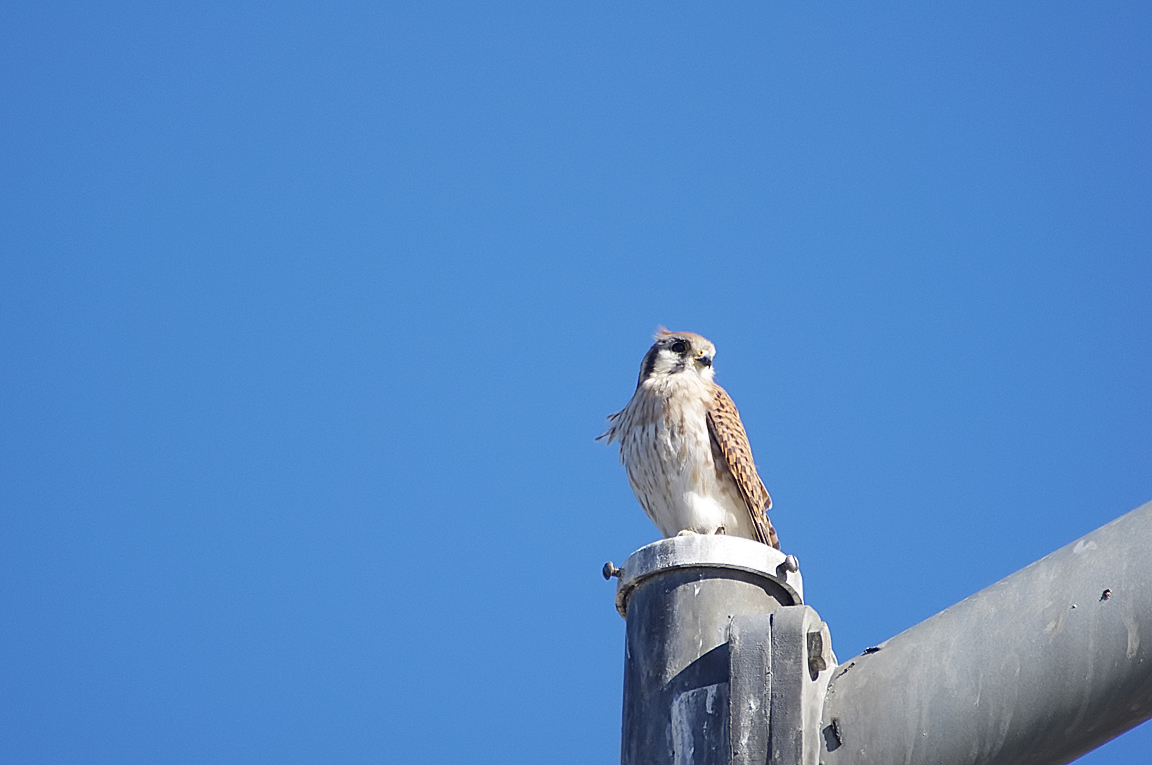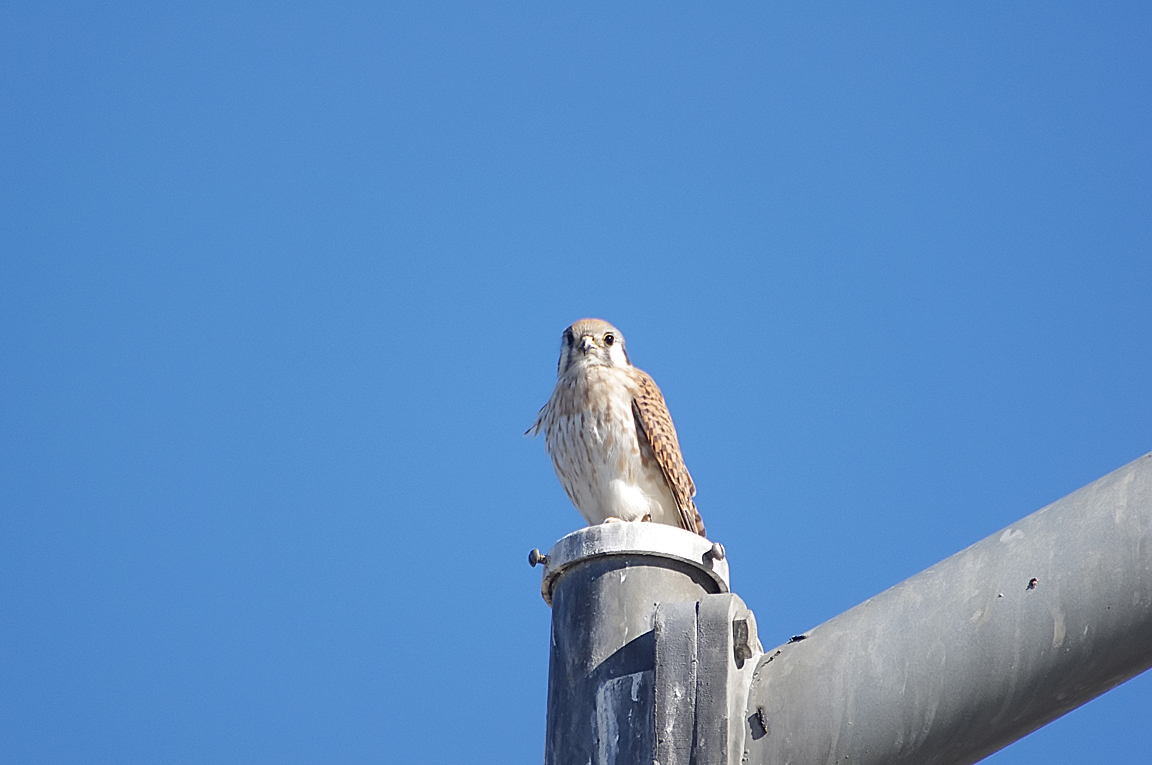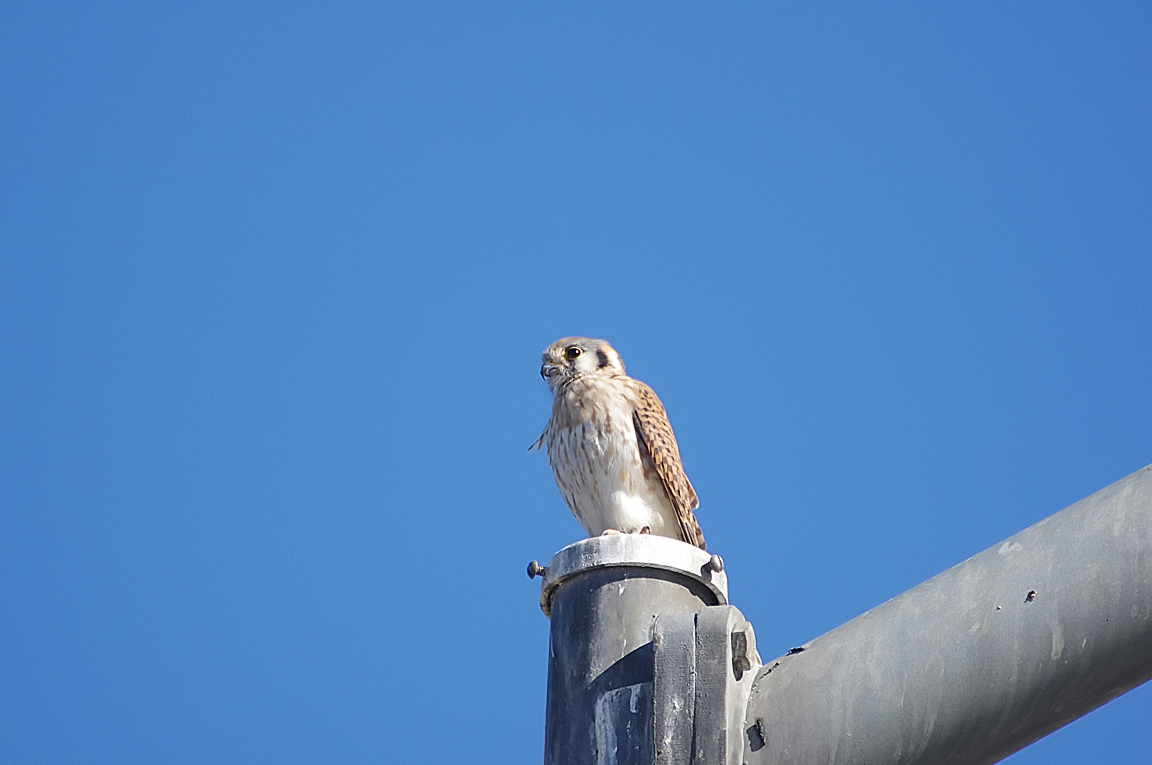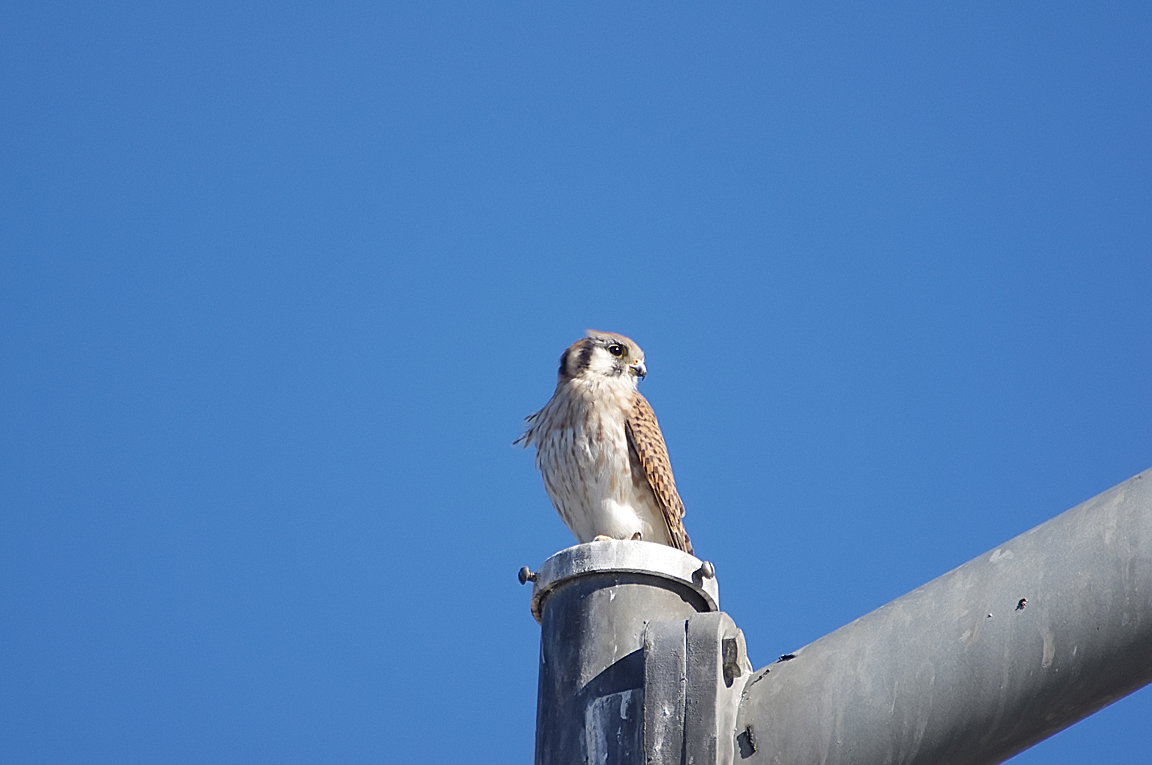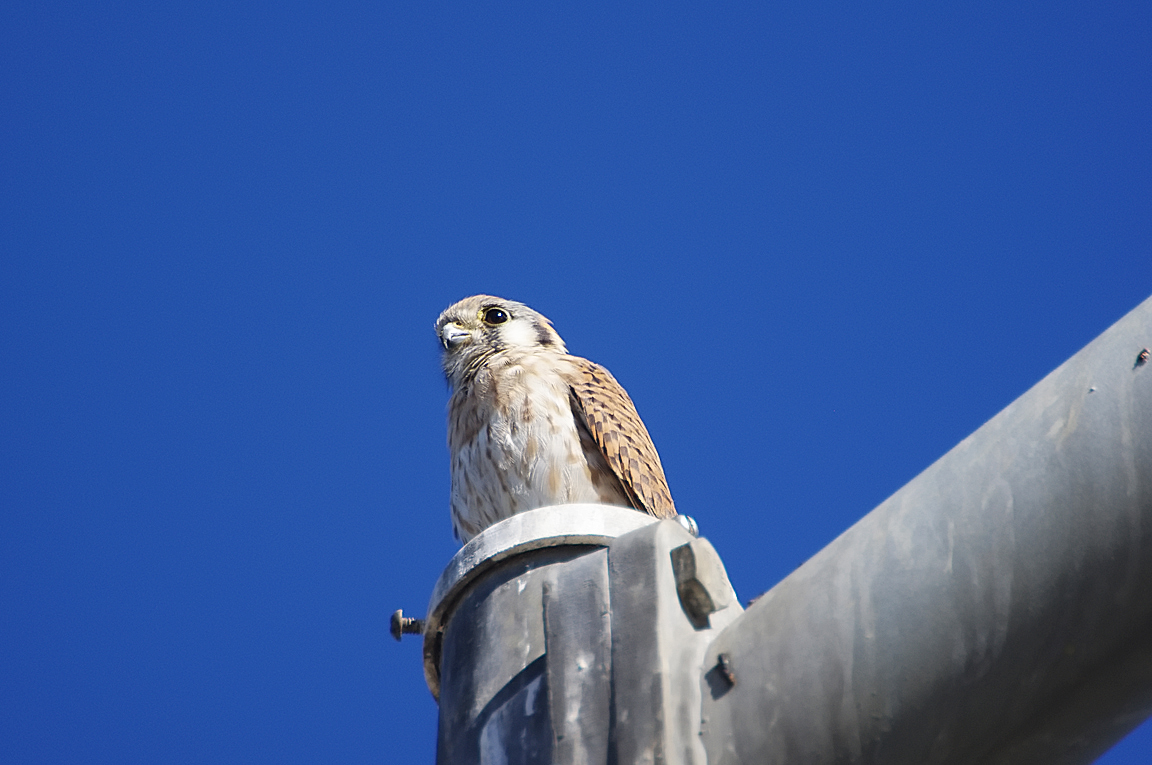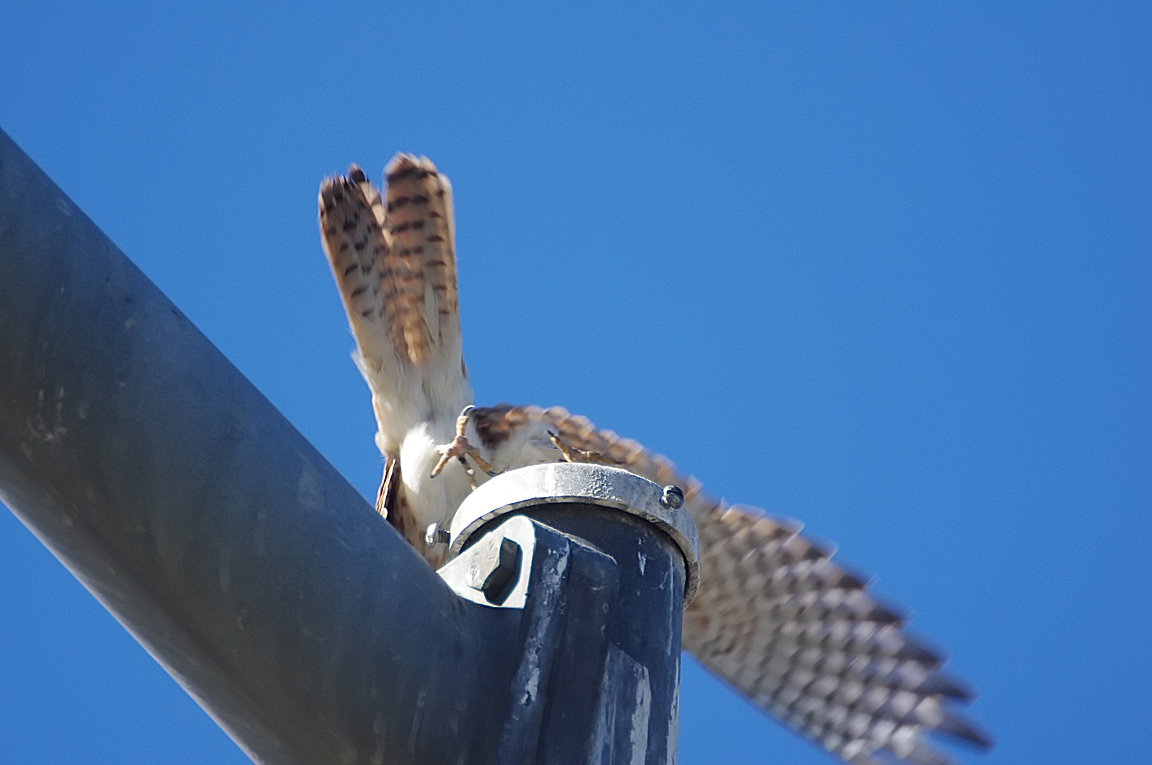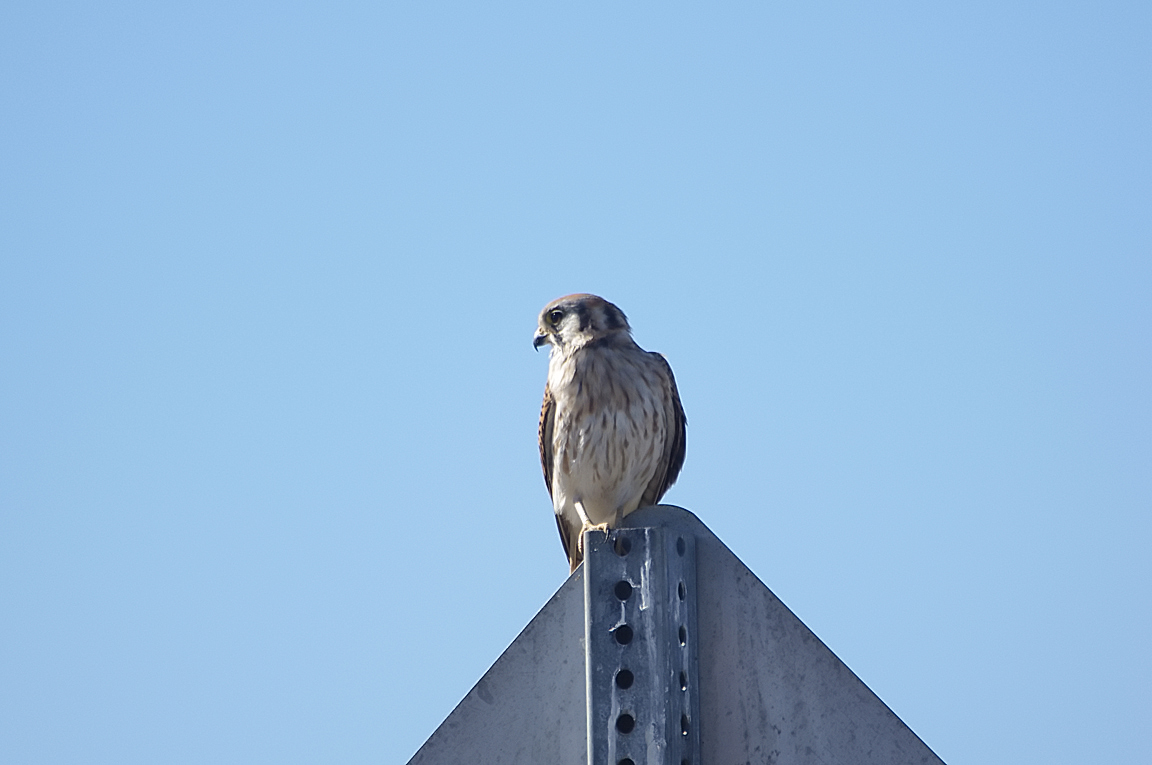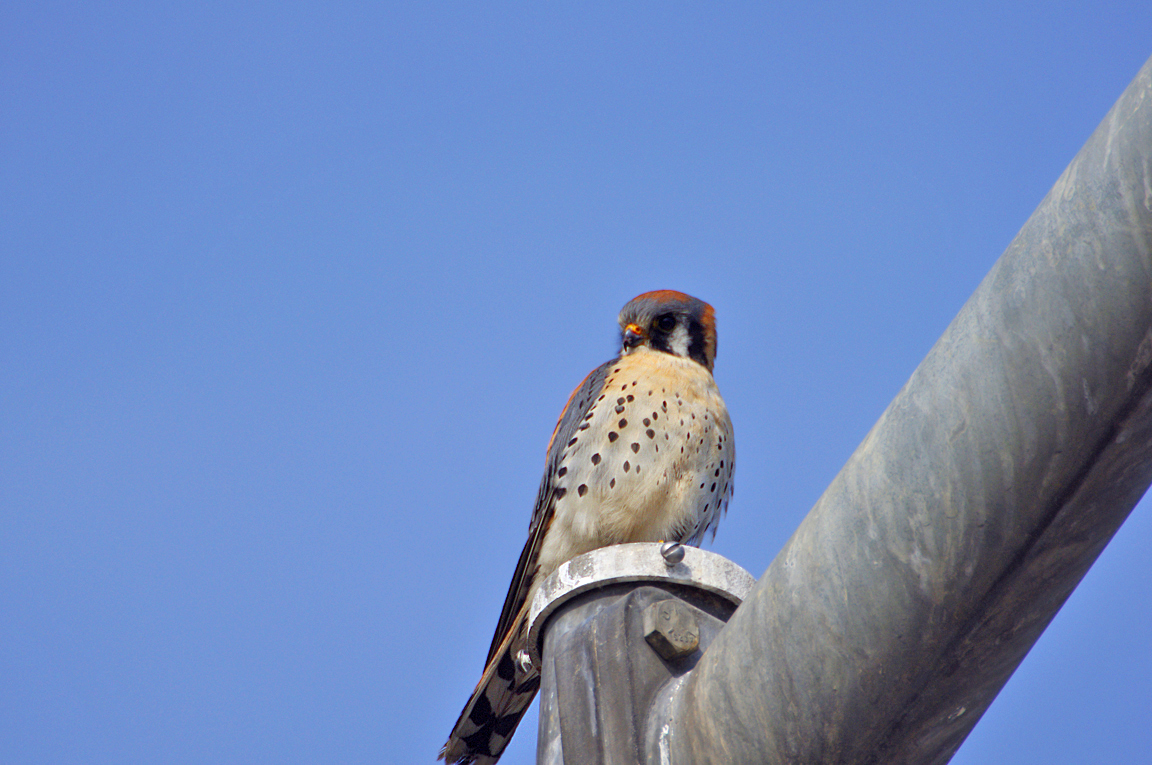|
|
|
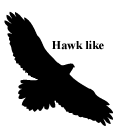 |
American Kestrel
|
| Recurvirostra americana | |
Perhaps the most colorful raptor in the world, the American Kestrel is the most common falcon in North America. It is found from Alaska to Tierra del Fuego, and in towns as well as wild lands.
Interesting Information
-
Although hover-hunting is conspicuous, this foraging method actually is used rather infrequently. It is used most often when suitable perches are not available, or when winds are strong enough to create updrafts favorable to hovering.
-
In winter in many southern parts of the range, female and male American Kestrels use different habitats. The female uses the preferred more open habitat, and the male uses areas with more trees. This situation appears to be the result of the females migrating south first and establishing winter territories. The males then are forced into the less preferred areas.
-
Nestling kestrels back up, raise their tails, and squirt feces onto the walls of the nest cavity. The feces dry on the cavity walls and stay off the nestlings. The nest gets to be a smelly place, with feces on the walls and uneaten parts of small animals on the floor.
Description
Adult Description
-
Small hawk.
-
Rufous back and tail.
-
Two dark mustache marks on face.
-
Length Range: 23-30 cm (9-12 in)
-
Weight: 111 g (3.9 oz)
-
Size: Medium (9 - 16 in)
-
Color Primary: Gray, Rufous or Rust
-
Underparts: Orange with brown spots.
-
Upperparts: Red-brown back, blue-gray wings with white spotting.
-
Back Pattern: Barred or banded
-
Belly Pattern: Spotted or speckled
-
Breast Pattern: Solid
Sex Differences
Male Description
Wings blue-gray with black spots. Tail rufous on back with a broad black subterminal band and a white or rufous tip. Tail white underneath with a few incomplete black bars. Back and rump orange to rufous, with a variable amount of black barring. Underparts pale buff to orange, with variable amount of black spotting, especially along sides. Crown blue-gray with some orange. Buffy spots with dark centers on either side of nape (back of head), making "eyespots" visible from behind.
Female Description
Wings rufous barred with black. Tail rufous with black bands. Underparts creamy to buff, heavily streaked with brown. Back rufous with heavy dark barring. Crown gray. Legs yellow.
Immature
Juveniles similar to adults.
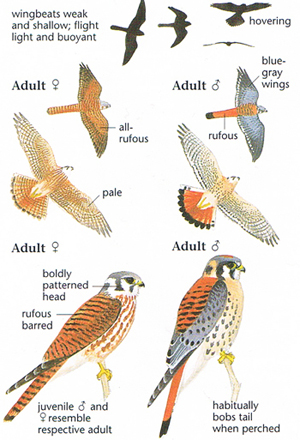
Photo taken from: The Sibley Field Guide by David Allen Sibley
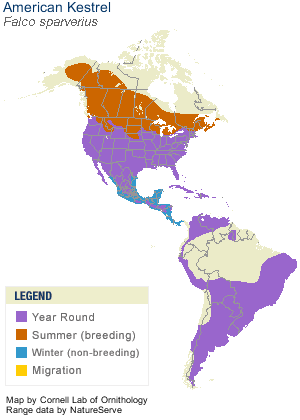
© 2003 Cornell Lab of Ornithology
|
Habitat |
|
Breeds in a variety of open habitats, including meadows, grasslands, deserts, parkland, agricultural fields, urban and suburban areas. |
|
Behavior |
|
Watches for prey from tall perches, such as trees and telephone poles. Also hovers and drops on prey. |
|
Food |
|
Large insects, small mammals, reptiles, amphibians, and birds. |
Taxonomy
| Kingdom: | Animalia |
| Phylum: | Chordata |
| Subphylum: | Vertebrata |
| Class: | Aves |
| Order: | Falconiformes |
| Family: | Falconidae |
| Genus: | Falco |
| Species: | Falco sparverius |
| Subspecies: | Falco sparverius paulus |
| Falco sparverius peninsularis | |
| Falco sparverius sparverius | |
Similar Species |
|
Merlin is slightly larger, lacks well defined face stripes, has dark tail with several light bands, and lacks rufous on back. |
|
Bird Sound |
|
Loud series of "klee-klee-klee" notes when excited. |
|
Eggs look like this |
|
Photo taken from: ARCTOS Collaborative Collection Management Solution |
Videos
American Kestrel
Adult at a distance
